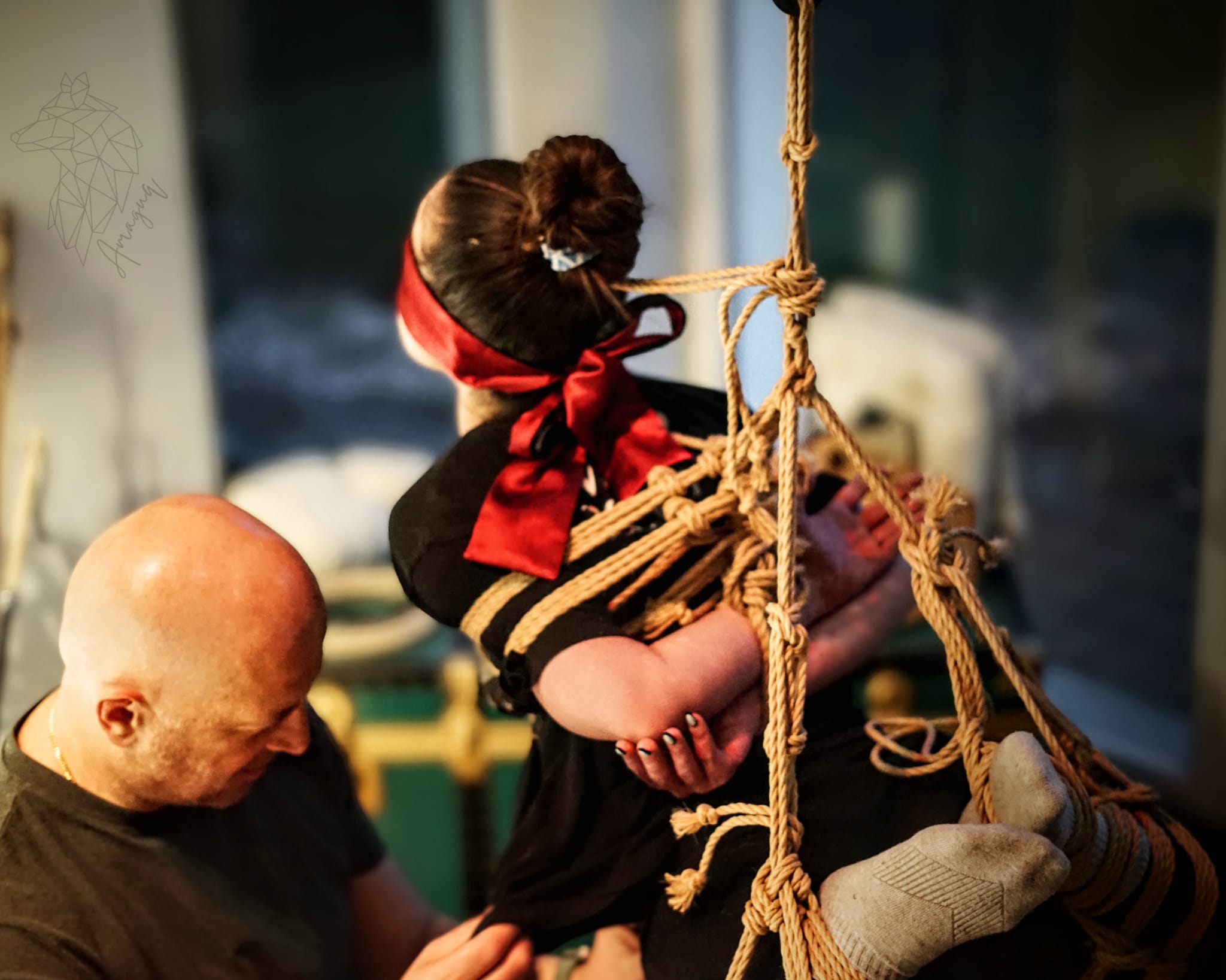
Are you learning Shibari? Read this!
Learning Shibari is a process who is like a never ending journey. In this process you will probably need to partecipate to some wokshops, to read books and blogs and watch online tutorials and videos. Another very important activity is the peer rope or peer jam.
First an explanation of what peer rope is: it's a specific space and time dedicated to shibari practice and peer sharing of knowledge. The purpose is to properly consolidate what you have learned at workshops or through an online tutorial.
For this reason I offer a weekly peer rope in Ljubljana (almost) every Thursday. The format is very simple and it look like this:
- Everyone must feel at home. That is why I do not want to feel like the host but a participant like others;
- Everyone is free to tie and use equipment according to their own experience, knowledge and practice, without any judgment from others;
- Whoever has more experience can and should offer it to others considering them as equals;
- No one should correct the tying of others unless asked or unless it poses a safety hazard. It is permissible to say that one has noticed something wrong, leaving the other person free to ask for more.
- No one should brag about their abilities or use the event for ego-satisfaction and need for exhibition.
What is the right approach to shibari?
What should be done
- Use the right tools, have a suitable space and learn the basics perfectly
- Avoid improvising until you are so good that you understand all the implications that a change to a ligature entails.
- Before moving on to something new learn the movements perfectly, tying knots and every tying until these are done by muscle memory and not by the rational mind.
Why should one do this?
- If the best riggers in the world recommend essentially 6mm jute or hemp ropes there is a reason. Wondering if you can use cotton, synthetic or other ropes influences and distracts you from your learning. Avoid it, use suitable ropes, and when you get really good you can try different ropes.
- Do I really have to explain to you why modifying a tie using the “in my opinion” criterion is stupid? You don't know how to tie your shoes yet, please perform what you are taught to the letter and only when you are able can you crate your own version of tying. Before then you are not able to understand the implications.
- The reason why you need to learn knots and tying to perfection until you don't even have to think about what you are doing anymore is as simple as, it seems, difficult for newbies to understand: you are tying another person, you have assumed control and responsibility for his or her life. Would you really want your memory to deceive you and in a moment of excitement not remember perfectly some part of a ligature you will use to suspend the person you love? Isn't it much better that your hands come to know instinctively what they are supposed to do and that your knowledge of safety is deeply ingrained in your mind?
Have I not convinced you yet? Well now I will tell you more
- Remember that shibari is essentially connection. You need to develop your technique to perfection in order to move from “remembering how to do it” to “doing it instinctively” and start doing shibari in earnest, stopping focusing on the ropes and finally focusing on your partner.
- The only way to do this is to try and try again a thousand times. If you've never felt pain in your fingers, you haven't practiced enough.
- You can do this at home but if you do it at the peer rope you can ask for advice. At home you risk memorizing wrong movements in your hands that will be difficult to correct later.
- You go to the workshop to learn and to the perr rope to consolidate.
- When you have consilded you can move on to learn the next rigging.
Be humble, be simple. Shibari it's dangerous!
Remember that the rigger serves the bunny, not the other way around. We are here to provide an emotional experience, not to prove something to our egos.
It is quite common to see riggers jumping from one workshop to another without ever consolidating what they have learned; these will never be able to connect with their partner and use the ropes only for their own ego and thirst for knowledge, increasing the risk of accidents.
Do not undervalue the beauty of playing on the ground, there is no rush to do suspensions or difficult things, focus on consolidating to provide an emotional experience for your partner.
Shibari is a much more difficult art than it looks and definitely dangerous. The risk of creating major damage and even death is real. In the cases of accidents that I know of yes it was always a chain of mistakes born of underestimating what was being done at the time. None of them had any idea what was going to happen, and at first the session seemed like any other, until the irreparable and fatal catastrophic event.
For this reason for the past year I have been offering this appointment free of charge to anyone who wants to, contributing in this way and in my own small way to prevent an accident from ever happening within our community.
Conclusion
So, my invitation is: Partecipate to your local peer rope, share your knowledge, consolidate what you learn at the workshop. Give your contribute for a big and healthy shibari community!